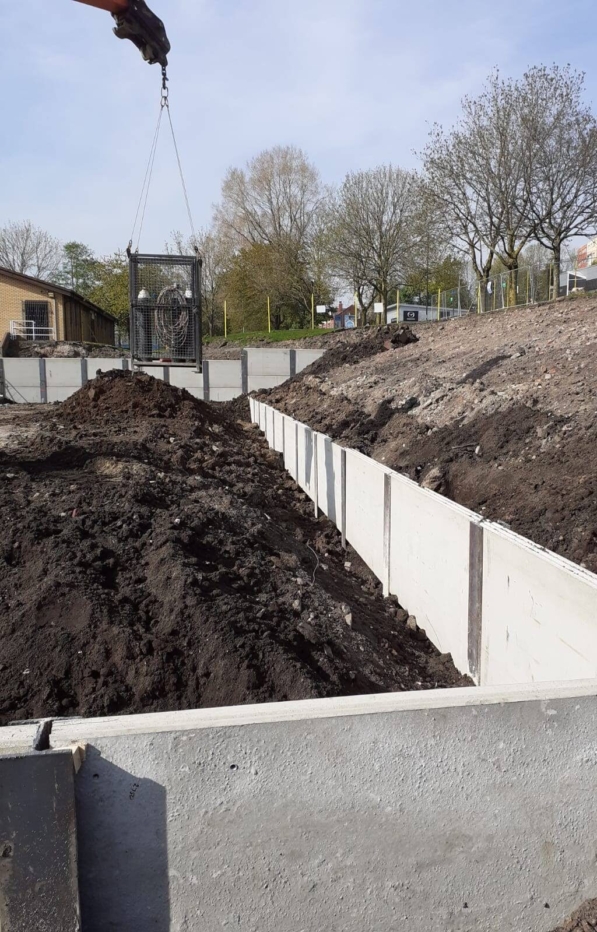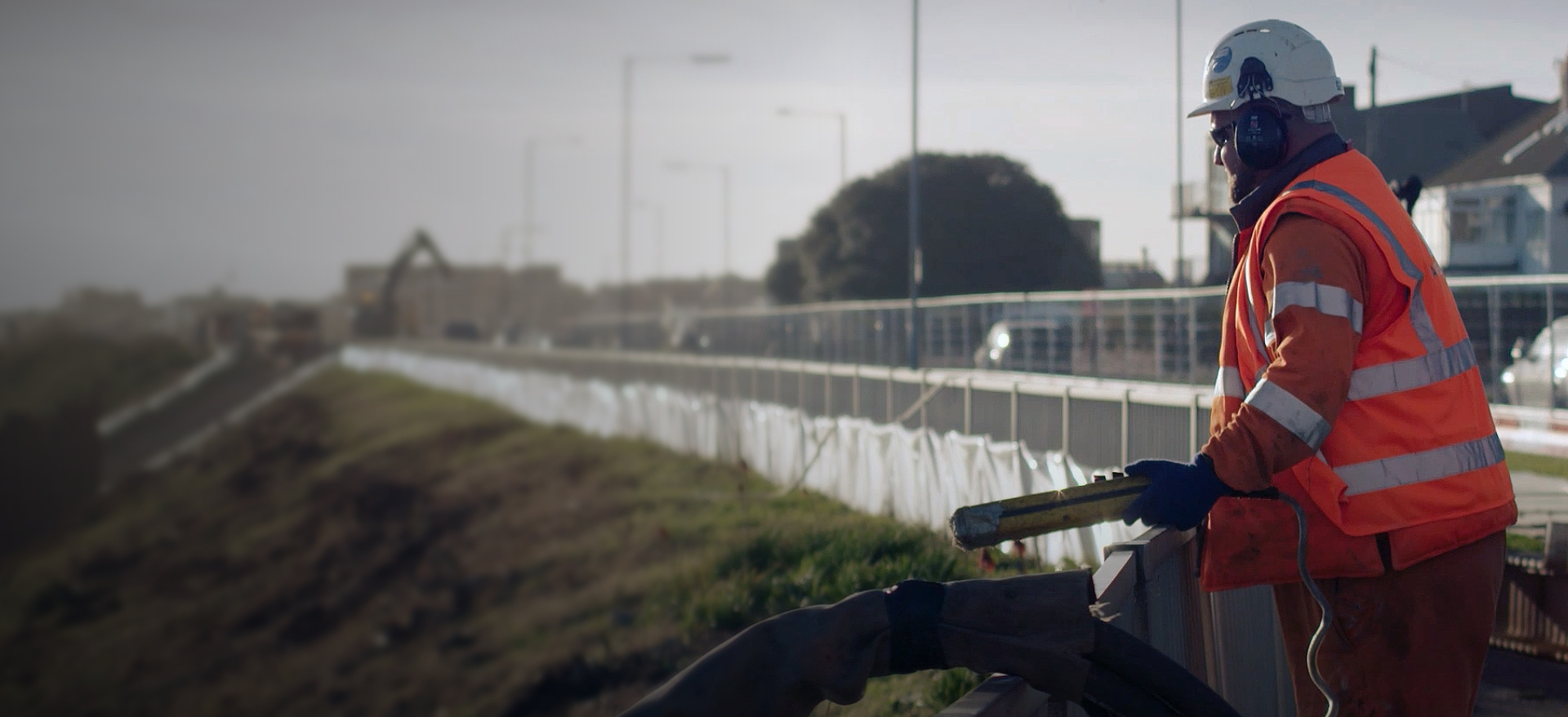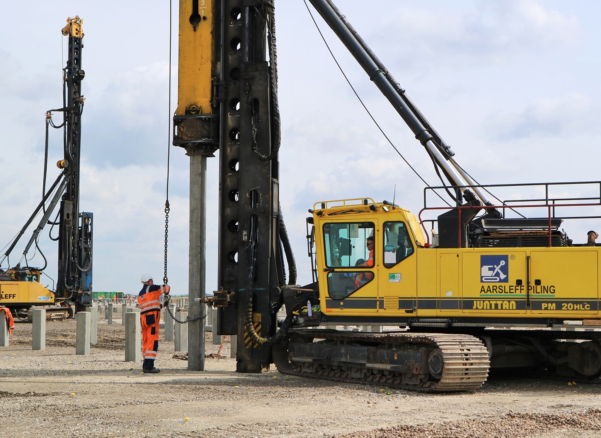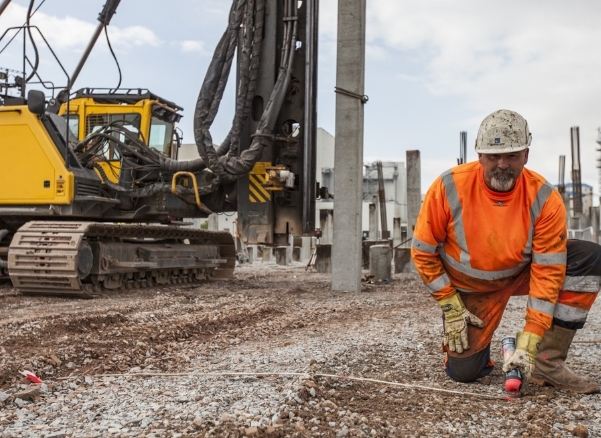Types of Retaining Walls
Understanding The Types of Retaining Walls
Retaining walls come in many options, each one designed for specific functions and soil conditions. Some of the most common types of retaining walls include:

1. Gravity Walls
Gravity retaining walls are the simplest and one of the original types. They rely solely on their weight and mass to resist the lateral earth pressure exerted by soil. Typically made from concrete or masonry blocks, gravity walls are thick at the bottom and taper towards the top. They can handle substantial loads and are often used in situations where heights are moderate. Their robust construction eliminates the need for additional retaining wall reinforcement.
2. Cantilever Walls
Cantilever retaining walls use a thinner and more efficient design. They consist of a vertical stem and a horizontal base slab, which sits under the backfill. Made from reinforced concrete with an L or T-shaped foundation, this wall type leverages the weight of the wall and foundation to counteract the lateral forces acting on it. They can be constructed onsite or offsite (precast). Cantilever walls are suitable for heights up to 10 metres and provide excellent strength while minimising material use.
3. Sheet Pile Walls
Sheet pile retaining walls consist of long, slender sections, made from steel, precast concrete, vinyl or timber. The interlocking steel sheets are driven or hammered into the ground to create a barrier against soil or water. Sheet piling can be a permanent or temporary retaining wall solution in most types of soil. It is often used in building foundations, underground structures and marine applications, providing good resistance to lateral forces. Sheet pile walls are also known for durability and effectiveness in tight spaces.
4. Anchored Walls
Anchored retaining walls are designed to extend the support provided by the wall. They are constructed by driving anchors deep within the earth, which are connected to the wall itself through cables or rods, and then filled with concrete. This type of wall is particularly useful in scenarios where space is limited and a thin structure is required. Anchored walls can support greater heights while resisting lateral forces effectively. They are often utilised in urban environments or locations where excavation is challenging, offering a flexible and robust solution.
5. Mechanically Stabilised Earth (MSE) Walls
Mechanically Stabilised Earth (MSE) retaining walls utilize layers of reinforced soil to create a stable structure. Layers of geosynthetic materials, such as metallic strips or mesh, are combined with soil to improve the wall’s stability. This wall type can easily adapted to different soil conditions. It also provides an economical and cost-effective solution for larger structures. MSE walls are frequently used in highway construction and bridge abutments. Their versatility and ability to blend with surrounding landscapes are significant benefits.
6. Geogrid Walls
Geogrid retaining walls are similar to MSE walls, but utilise geogrids. This refers to geosynthetic material specifically designed to reinforce the soil behind the wall. These geogrids are placed horizontally between wall courses and create strategic interlocks, increasing the wall’s overall strength. Geogrid walls are ideal for areas with weaker soil conditions or where additional lateral support is necessary. They are environmentally friendly options that allow for landscape integration and aesthetic customisation.
7. Gabion Basket Walls
Gabion basket retaining walls are a type of gravity retaining wall, consisting of multi-celled, rectangular wire mesh baskets, which are typically filled with earth or rocks. They are made to construct erosion control structures and allow for drainage. Gabion basket walls are often used in agricultural and landscaping projects due to their natural appearance and permeable properties, making them an environmentally friendly choice. They are also effective for lower heights and can be easily constructed and modified as needed.
3 Factors to Consider When Choosing The Right Retaining Wall System
To choose the right retaining wall system for your site, you need to consider certain factors. These factors include:
1. Site Conditions
The first step in choosing a retaining wall is to evaluate your site conditions. Different soils have varying properties that can significantly affect the stability and design of a retaining wall. For instance, clay soils can expand when wet and contract when dry, which may require a more flexible wall design. Sandy soils, on the other hand, offer good drainage and may not exert as much pressure on the wall.
Additionally, consider the slope of the land and any existing drainage issues. A site with poor drainage might need a wall with built-in drainage solutions to prevent water pressure buildup behind the wall. Understanding your site conditions will help determine whether a steel, masonry block or timber retaining wall will perform most effectively.
2. Cost
Cost is another factor to keep in mind when choosing a type of retaining wall system. The cost of a retaining wall depends on the size, type of materials and labour. Precast concrete and stone retaining walls are typically more expensive than timber or modular block systems. While materials like concrete or steel might have a higher initial price, their durability could translate to lower maintenance costs over time compared to timber, which may need replacement due to deterioration.
3. Aesthetic Appeal
It is worth considering the aesthetic aspect of your retaining wall. While retaining walls are functional structures, they can also enhance the aesthetic appeal of your site. Rock retaining walls can create a natural and rustic look, while metal and precast concrete retaining walls appear more clean and modern. To choose the right retaining wall solution, you need to decide whether you want the wall to blend in with its surroundings or stand out as a design feature.


Get a quote
For more information about Aarsleff Ground Engineering or to send in your enquiry,
call 01636 611140 and speak to an expert member of our team today.
The Latest. News, podcasts & projects






